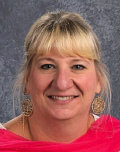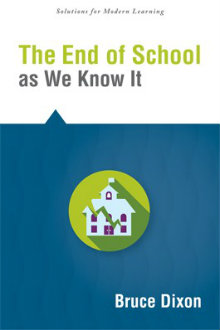The End of School as We Know It
The End of School as We Know It
By Bruce Dixon
(Solution Tree Press, 2016 – Learn more)

The topic of education reform has been hotly debated for years, but despite the debates and the changes that have been implemented, schools really haven’t changed much from the way they’ve looked like for the past century.
Previously, this could have been perceived as just slow progress, but now that we are a decade into the 21st century, reforming the way education looks and feels has become critical.

Tech’s role in modernizing education
Enter Bruce Dixon’s book The End of School as We Know It. In this succinct, inspiring text Dixon provides a great jumping off point for anyone who is wondering how to tackle changing the way we educate students.
Like many people who are looking to be innovators, Dixon sees not only potential but necessity in using technology and the access to information via technology as the vehicle for overhauling teaching and learning.
It is noted, though, in the preface written by Will Richardson, that: “This is not just about equal access to technology and the Internet, although that’s a good start. This is about seeing our purpose and our practice through a different lens that understands the new literacies, skills, and dispositions that students need to flourish in a networked world.”
Dixon, a recognized global innovator and co-founder of the Anywhere Anytime Learning Foundation, provides a contextual understanding for why we need to change the way school works. He addresses the model of education that has been used for years in this country and follows that with the rationale for why change is needed.
Technology has provided today’s students with access to quantities of information that nobody could have dreamed of. Technology allows students to access the same kinds of information that experts and leaders in all fields have access to as well as gaining personal access to those experts and leaders themselves.
How students like to learn
That’s the vision. Yet education still mostly looks like this: The teacher determines what’s important for kids to know, the teacher delivers that information to the students, and the students spit back what they’ve retained.
This is likely the way most teachers received their own K-12 education, and they are intelligent, knowledgeable professionals. But the problem is this is not the way kids today like to learn (and have trained themselves to learn).
And they really do like learning! They learn things all the time outside of school. They are accustomed to having a desire to learn something, use the technology they have with them all the time to learn about it, then put what they have learned into practice.
Schools need to flip their model of education to capitalize on the desire kids have to learn if they are going to be truly engaged in their own learning while they are present in our classrooms.
Answering essential questions
The body of this brief book (72 pp.) focuses on addressing three essential questions:
- How do students learn, and under what conditions do you believe they learn best?
- What does digital richness now make possible for modern learners, and what are the implications for contemporary teaching and learning?
- What building blocks are necessary for a modern learning environment that allows our learners to leverage and amplify the opportunities now afforded to them in this digitally rich world?
The chapters in this book explore each of these essential questions and give historical and modern context, providing the reader with clarity and inspiration for making radical changes to education. Each chapter ends with a section titled “Moving Forward,” which provides thought-provoking questions that would be ideal for driving discussion in a book study group or prompts for blog posts.
Responding to these questions will also provide educators who are ready for a change the means to assemble a framework for making changes in their personal teaching and learning practices.
A monumental shift
Dixon doesn’t ignore the fact that making the monumental shift that is necessary in education can be intimidating and overwhelming. He acknowledges this head-on but offers such compelling reasons for why taking the risk is necessary that it is easy to feel inspired to start this journey.
He closes the book with an epilogue titled, “The Modern Learner’s Commencement Speech.” In it he summarizes nicely what today’s students need to know and do in order to become the engaged, college and career ready global leaders all teachers want their students to be.
If schools can redesign education to make this modern learner’s commencement speech a reality, it really will be the end of school as we know it – and that actually will be the best outcome imaginable!
Renee Bogacz has been a teacher for more than 25 years. She has transitioned from English language arts to being the instructional technology resource teacher for her district. She has a passion for integrating technology into teaching and learning but keeps her original love for language arts alive by reading and writing about education topics. She recently accomplished one of her long-desired professional goals: becoming a Google Certified Educator. You can follow her on Twitter as she shares professional resources and the exciting things happening in her school district @mrsbogacz.


































